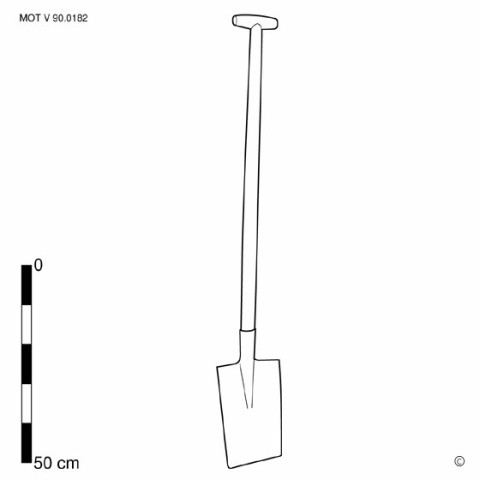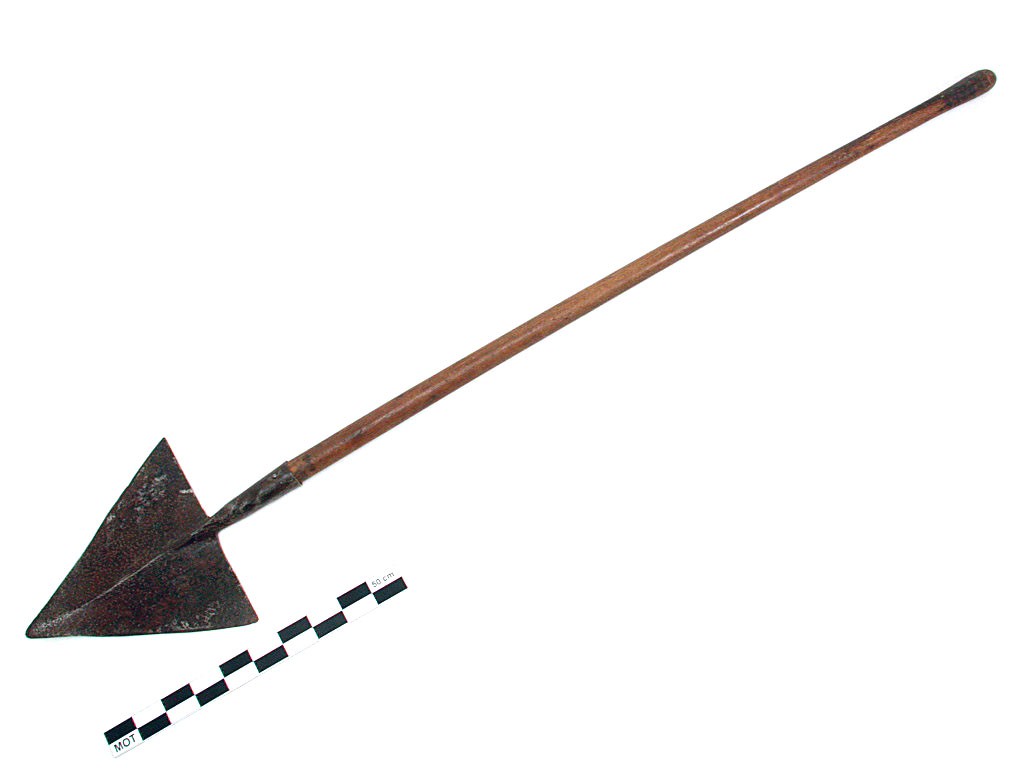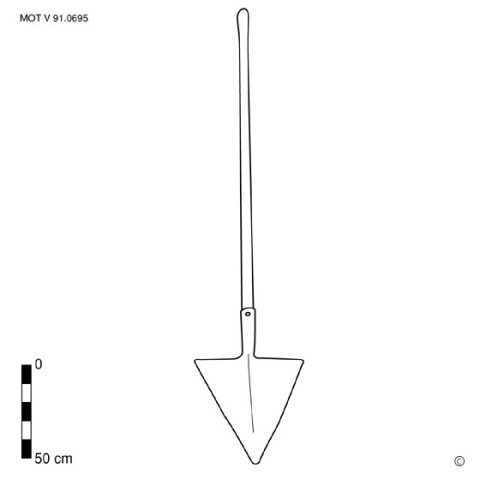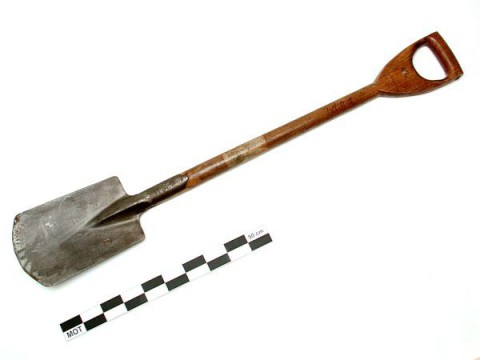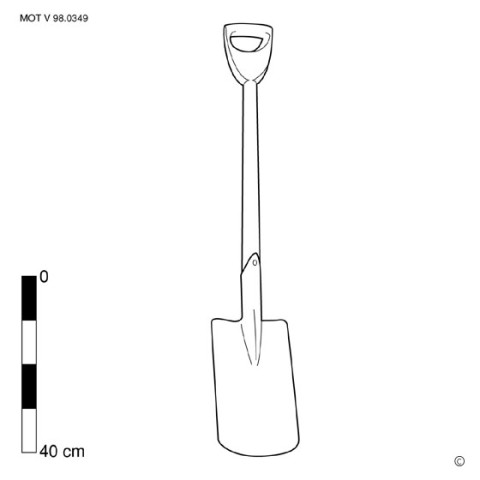Garden spade
Today it is a spade with an iron, more or less rectangular or triangular blade, about a third longer than it is wide (approx. 27 x 18 cm), which is an extension of a ball, T or D handle (1) . The size of the blade depends on the force required to lift and move the soil clod (2). The blade of the garden spade is sometimes provided with a footrest so as not to damage the shoe of the user. Exceptionally, an extension is attached to the top of the blade of the garden spade to use the tool as a spade (3).
In the past, the garden spade was also made entirely of wood. She was shaken up then. Dimensions and shape of the blade can vary greatly. In Ireland there are even asymmetrical spades (4).
The garden spade is used to dig the garden or field, to transplant crops and to dig (5). [MOT]
(1) Tool length can vary widely depending on the region. In Belgium, for example, garden spades of about 110-120 cm are used, in Italy tools of 160 to 210 cm are used (see eg CENCELLI & LOTRIONE: 172).
(2) For example, there is a spade for ladies, with a smaller blade (approx. 15x22 cm).
(3) SCHWERZ in DAVID 1975a: 35 and LINCKE in DAVID 1975a: 97.
(4) See eg. GAILEY & FENTON: 38.
(5) See the article Spade cultivation in Flanders.
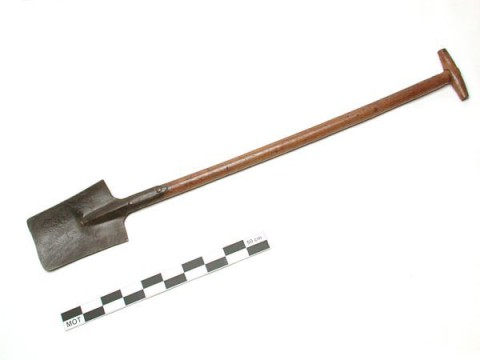
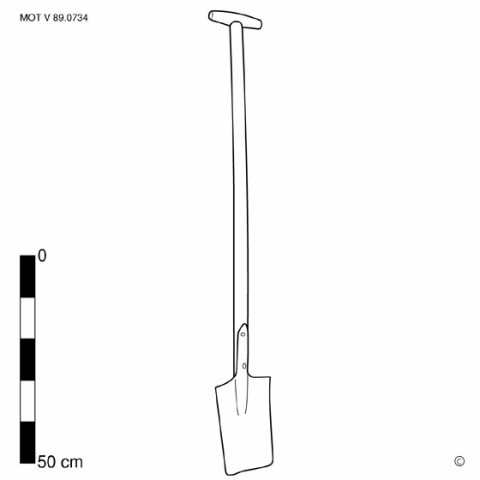
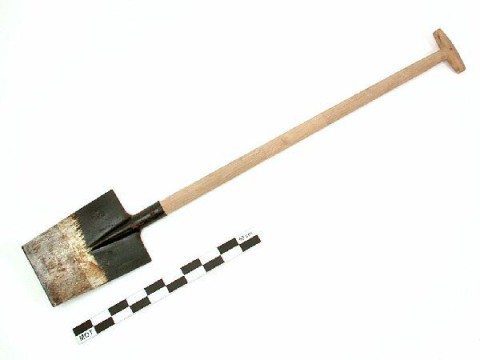
Garden spade MOT V 90.0182
